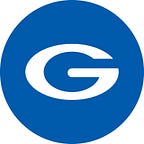zkSync Era: An Exciting Step Forward for Ethereum’s Scalability and Growth
As the demand for Layer 2 scaling solutions for Ethereum grows, zkSync stands out as a promising contender. Following our articles on Optimism and Arbitrum, in this article, we’ll explore zkSync’s unique features, how it works, the native token, and what makes it different from other Layer 2 solutions like Optimism and Arbitrum.
What is zkSync?
zkSync is a Layer 2 scaling solution developed by Matter Labs for Ethereum that employs Zero-Knowledge (ZK) rollups to enable fast, secure, and cost-efficient transactions. With off-chain computation and storage, zkSync addresses Ethereum’s scalability and high transaction costs while maintaining the same security level as Ethereum.
Since its public Mainnet AlphazkSync Era, launch on March 24, the zkSync ecosystem has been quickly rising to become the third most popular Layer 2 solution with over $100 million in value locked within 10 days, and once reached a peak of 4.4 TPS(transactions per second).
Zero-Knowledge Rollups (ZK-Rollups)
zkRollups use a different approach to process transactions on Ethereum compared to Optimistic rollups. Generally, ZK-Rollups offer higher security through cryptographic proofs, and lower transaction costs with an off-chain data extension called zkPorter.
In contrast, Optimistic rollups provide greater scalability and lower costs by bundling hundreds of transactions into a single transaction on Ethereum’s main network, reducing the gas fee required to pay.
・Read more about Optimistic Rollups:
Unlocking Ethereum’s Scalability With Optimism: The Layer-2 Solution You Need To Know
Features of zkSync
・Enhanced Scalability and Reduced Gas Fees
zkSync significantly reduces transaction costs and improves scalability using ZK-rollups. Users can pay lower gas fees than Ethereum Layer 1, making it a cost-effective alternative. Additionally, zkSync can process thousands of transactions per second, addressing Ethereum’s scalability issue and increasing overall throughput.
・Security: the Execution Delay
zkSync has a unique execution delay mechanism that provides an additional layer of security. Each L2 block committed to L1 is time-locked before execution, starting with a 24-hour delay that will gradually decrease over time. The delay allows the team to verify the transactions in each block before it becomes final, preventing quick draining of the protocol in case critical bugs are discovered and exploited. Even if an attacker successfully compromises the servers running the sequencer, there is enough time to detect an exploit, investigate, and freeze the protocol via governance.
Native token of zkSync
According to the latest report, there are no plans to launch a token for now. The network is largely centralized, and Matter Labs controls the core components of the network’s operation. The team estimates that the sequencer will be decentralized in approximately a year, and there could be a need for a token for permissionless participation in the validator set to support the validators’ decentralized mechanism.
Comparison with Optimism and Arbitrum
While zkSync, Optimism, and Arbitrum aim to address Ethereum’s scalability and transaction costs, their approaches and technologies differ. zkSync employs ZK-rollups, offering faster transaction processing and increased security, while Optimism and Arbitrum use Optimistic rollups. Also, zkSync can not run smart contracts directly on the Mainnet, unlike Optimistic rollups.
In addition, while the TVL of the zkSync ecosystem grew to $149 million just a few days after the launch of zkSync Alpha, the layer-2 space is dominated by Optimistic rollup solutions. Compared to Arbitrum and Optimism’s TVLs of $6.08 billion and $1.97 billion respectively, zkSnyc still has ample room for growth.
Bottom line
zkSync’s innovative approach to scalability and security through ZK-Rollups has quickly garnered attention and adoption from the Ethereum community. The recent surge in value locked and transactions per second is a testament to the promising potential of the zkSync ecosystem. As the team continues to work towards decentralization and the possibility of a native token, it will be interesting to see how zkSync stacks up against its Layer 2 competitors, Optimism and Arbitrum, in the long term. Nevertheless, zkSync has undoubtedly made its mark as a significant contender in the Layer 2 scaling solutions space for Ethereum.
More Stories:
📰 Arbitrum: The Ultimate Layer-2 Scaling Solution for Ethereum
📰 Unlocking Ethereum’s Scalability With Optimism: The Layer-2 Solution You Need To Know
About GMO-Z.com Trust Company
Building Financial-Grade Digital Assets. The World’s First Regulated JPY-Pegged Stablecoin Issuer. Visit our website to learn more.
Disclaimer
This content is not financial advice and it is not a recommendation to buy or sell any financial instruments, FX trading, cryptocurrency or engage in any trading or other activities. You must not rely on this content for any financial decisions. Acquiring, trading, and otherwise transacting with financial instruments or cryptocurrency involves significant risks.
We strongly advise our readers to conduct their own independent research before engaging in any such activities.GMO Trust does not guarantee or imply that any cryptocurrency or activity described in this content is available or legal in any specific reader's location. It is the reader's responsibility to know the applicable laws in their country.